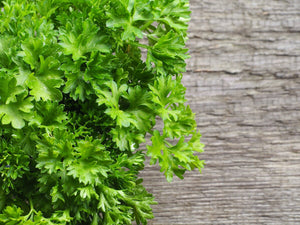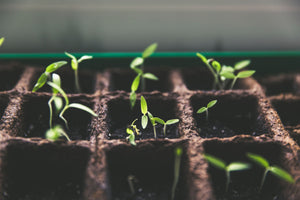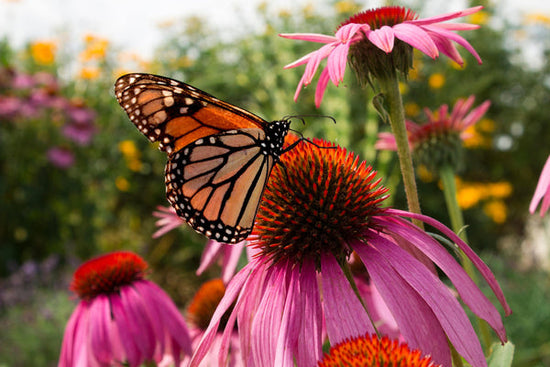Topics
How to Make Your Pollinator Garden Buzz & Hum
Pollinator gardeningHaving someone doing the specialized work of pollinating the garden is a big help. It’s also a delight to be buzzed by an energetic hummingbird, to watch the bees working, and to see butterflies visiting your flowers. We think it’s well worth the effort to create a garden that’s right for them, too!

Just what is pollination, anyway? Everyone wants beneficial pollinators in their garden because it helps the plants… somehow or another. But maybe you’re a little fuzzy on what pollination is.
What is pollen and why is it important to add sources to your garden?
Pollen is more than just an allergen that makes you miserable when the seasons change. This yellow powder is the male part of seed production. Some plants rely on the wind to pollinate. You can largely blame your allergies on these plants, which produce large amounts of airborne pollen.
Other plants need pollinators to help do the work. Birds, bats, bees, butterflies, and other insects do this important work. Without pollinators, many plants wouldn’t produce fruits, vegetables, or seeds.
Creating a pollinator-friendly garden
You can see why it’s important to create spaces that are friendly to pollinators. Humans can hand-pollinate if necessary, but it’s really a job best done by the experts. We’ve created a few articles to help you make a friendly space that is full of these friends buzzing, flitting, and fluttering about.
- Support your local pollinators! This article is a general overview of how to use your garden to help support your native pollinator population.
- Companion planting is a great way to bring a variety of friendly insects to your garden while repelling pests.
- A well-planned butterfly garden has several components that protect and support these colorful pollinators.
- Getting more specific, planting milkweed is the most important way you can support declining monarch populations. Other pollinators love this beautiful flower, too.
- Hummingbirds love feeders, but those are only supplements to a healthy diet. Adding hummingbird-friendly plants to your garden can attract these lively visitors year after year.
- You don’t have to be a beekeeper or have your own apiary to create a bee-friendly garden.
- Choose the right flowers for bringing birds, bees, and butterflies to your garden. This is a fun way to add some beauty to the world and share your space with these underappreciated animals.

How you can help pollinators thrive
Many pollinator species are in decline right now. Habitat loss, the widespread use of insecticides targeted at other insects, and other factors contribute to this worrisome trend. But, humans can be a big part of the solution to this problem.
Planting lots of flowers and creating a welcoming environment in your garden is one way that you can help. If you do the work to make your garden inviting to pollinators, you’ll be rewarded with lots of visitors!
Written by Teresa Chandler
Popular Posts
-

Growing Parsley from Seed - How to Keep a Continual Harvest
-

Must-Have Supplies to Get Indoor Seedlings Off to a Great Start








Leave a comment